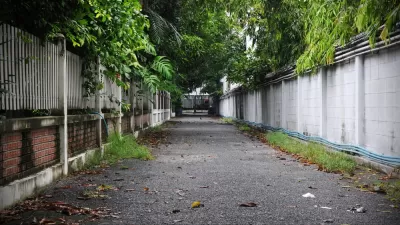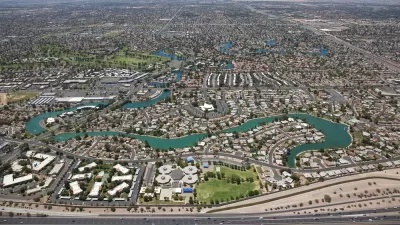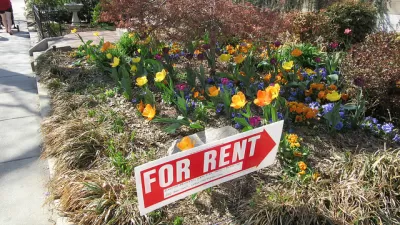A new HUD survey could help change the way the federal government defines the "suburban"—a notoriously tricky proposition.

The U.S. Department of Housing and Urban Development's 2017 American Housing Survey (AHS) included a question about whether respondents consider their neighborhoods to be urban, suburban, or rural, hoping to shed more light on one of the toughest questions in planning and development: What's a suburb, exactly?
According to a webpage hosted by the Office and Policy Development and Research, "HUD obtained responses to the neighborhood description question from nearly 76,000 households, including approximately 2,150 households in each of 25 large metropolitan areas," making it the largest ever survey on this question, expanding on a previous effort by Trulia. (The Pew Research Center has also undertaken a similar survey effort.)
The webpage sharing the new survey data also offers insights into why the motivations behind the survey, and one is a telling revelation about the disconnect between public policy on issues of land use and development compared to the realities of community for most Americans. "HUD wanted to understand the extent to which existing federal definitions of urban and rural obscure the stylized fact that half of Americans live in a suburban setting." HUD's effort to reveal the way federal definitions obscure the realities of American development patterns could inform reform in the next generation of federal definitions.
"To date, HUD has published two products from this data. First, HUD created a series of summary tables summarizing some basic results. Second, HUD and coauthors created the Urbanization Perceptions Small Area Index, which classified each census tract as urban, suburban, or rural based on the 2017 AHS data."
FULL STORY: 2017 AHS Neighborhood Description Survey

Planetizen Federal Action Tracker
A weekly monitor of how Trump’s orders and actions are impacting planners and planning in America.

Congressman Proposes Bill to Rename DC Metro “Trump Train”
The Make Autorail Great Again Act would withhold federal funding to the system until the Washington Metropolitan Area Transit Authority (WMATA), rebrands as the Washington Metropolitan Authority for Greater Access (WMAGA).

The Simple Legislative Tool Transforming Vacant Downtowns
In California, Michigan and Georgia, an easy win is bringing dollars — and delight — back to city centers.

The Small South Asian Republic Going all in on EVs
Thanks to one simple policy change less than five years ago, 65% of new cars in this Himalayan country are now electric.

DC Backpedals on Bike Lane Protection, Swaps Barriers for Paint
Citing aesthetic concerns, the city is removing the concrete barriers and flexposts that once separated Arizona Avenue cyclists from motor vehicles.

In These Cities, Most New Housing is Under 441 Square Feet
With loosened restrictions on “micro-housing,” tiny units now make up as much as 66% of newly constructed housing.
Urban Design for Planners 1: Software Tools
This six-course series explores essential urban design concepts using open source software and equips planners with the tools they need to participate fully in the urban design process.
Planning for Universal Design
Learn the tools for implementing Universal Design in planning regulations.
Smith Gee Studio
City of Charlotte
City of Camden Redevelopment Agency
City of Astoria
Transportation Research & Education Center (TREC) at Portland State University
US High Speed Rail Association
City of Camden Redevelopment Agency
Municipality of Princeton (NJ)





























